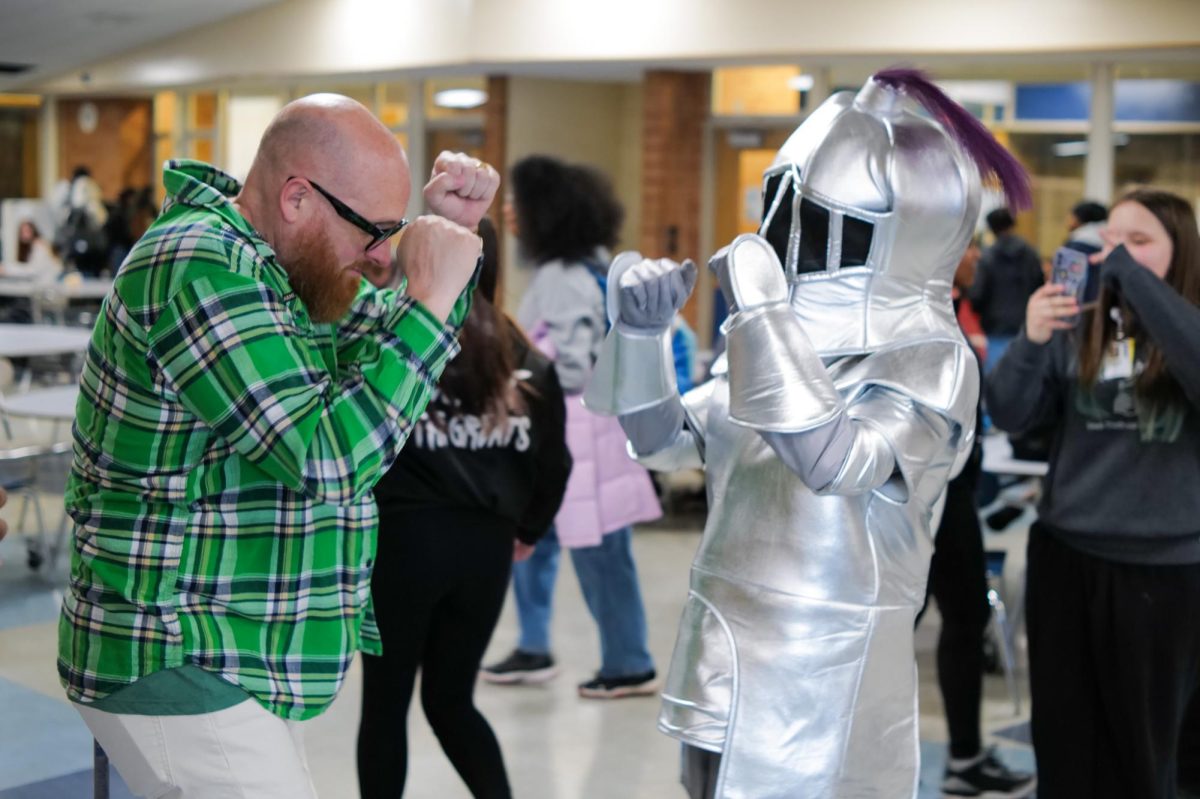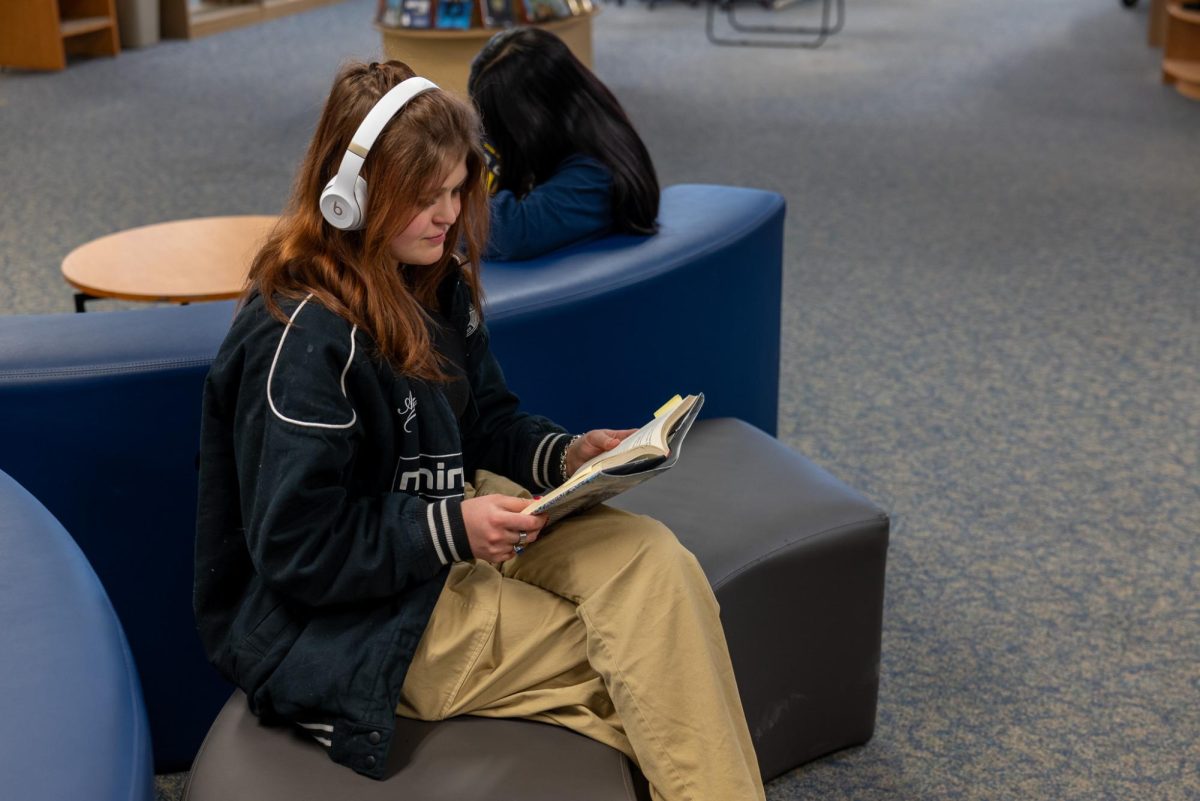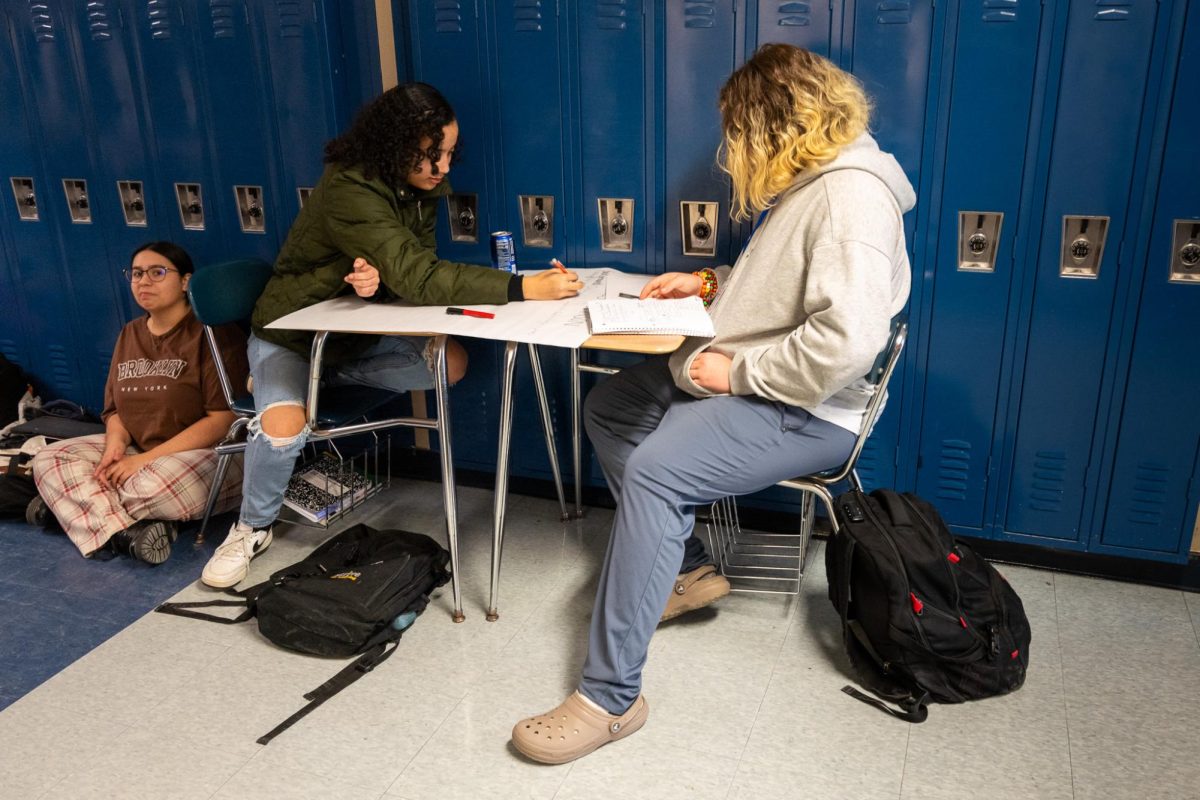Your day has been exhaustingly long. You had to do the Pacer test in PE, you failed your math test terribly, you spent three hours taking that AP test you’ve studied all year for and you have a gut feeling that you totally bombed. You trudge down the hallway, open your door and almost immediately fall into your bed, feeling terrible about yourselfs, so you plug in your headphones, start blasting your favorite song into your ears and instantly feel at ease.
Music therapy, as described by the Cleveland Clinic, is “the use of music and/or elements of music (like sound, rhythm and harmony) to accomplish goals, like reducing stress or improving quality of life.”
Music therapy can be used in a medical or nonmedical setting: it’s simply listening to music to gain its therapeutic properties.
“When I’m sad, I like to listen to music with a slow rhythm and beat, such as certain Lana Del Rey songs and stuff by artists like Mitski that are really nice and also songs that I’ve heard many times, so it’s not something unfamiliar. It’s very comforting,” said freshman Madeline Hunt. “A lot of the time, I find I’m able to multitask when listening to music, which means I’m still able to be productive, and it makes it so that I can still get done whatever I’m stressed about while enjoying this thing that brings me comfort and peace.”
Music has been proven, both by student experiences and scientific studies, such as the aforementioned Cleveland Clinic article, to ground people through difficult experiences, help enhance focus and provide a sense of community and understanding.
Students clearly love listening to music. If you walk around Loy Norrix, you’re sure to see students walking around with headphones on, rocking band tees or even convincing teachers to play their favorite songs.
There’s also dedicated music classes such as band, orchestra and choir, as well as musical based extracurriculars and even student-formed musical acts. Students invest in physical musical mediums such as vinyl records, CDs, and cassette tapes. Students also invest in promotional merchandise for their favorite musical artists such as posters, apparel and accessories. Students are passionate about music, not only for the community it creates, but for the comfort and escapism it can provide.
“One song that has really helped me through a lot of things is called ‘Life Could Be Sweet.’ It really has helped me with just finding my own escape because it has a lot of escapist concepts in it, and it’s just a song that’s been really good to help me find an outlet in life. It makes me feel like life really could be sweet,” Hunt said. “It makes [me] feel like there’s a sense of stability when I might not be feeling very emotionally stable at the time because it’s something that’s reliable for me.”
Feelings seen by music can help release and express difficult emotions. As mental health issues in teens become more prevalent, music provides an easily accessible, and effective way for teens to work through their problems. While traditional therapy and even professional musical therapy can grow expensive quickly, streaming services such as iTunes, Spotify, and Apple Music are much cheaper, while services like YouTube and SoundCloud provide music completely free of charge, though you may have to watch a few ads.
“I think music taps into a part of your brain that few other things do,” said librarian Michele Coash. “So in terms of it being cathartic, I think that it kind of opens up my brain and makes me feel and think in ways I might not without it.”
Music has been scientifically proven to help adjust behaviors, provide consolation, and help through difficult experiences. In fact, many therapists administering cognitive behavioral therapy (CBT) encourage their clients to create a playlist filled with music they find calming to ground them in scenarios that may cause panic or anxiety attacks.
While there are many other tools used to curb anxieties, music is by far the most portable, accessible, and simple. The lulling familiarity and relatability of music is an almost universal appeal. Students name artists like the aforementioned Lana Del Rey and Mitski, as well as artists Olivia Rodrigo, Taylor Swift, Noah Kahan and Phoebe Bridgers as common “comfort artists,” which makes sense, considering all these artists have many songs surrounding heartbreak, sadness, loneliness, and mental illness, things that are all common in the everyday life of a teenager.
“When I’m listening to a lot of songs that just seem so closely personal to what I’m going through in that particular moment. It can be so comforting to know that someone else out there has gone through it and endured it and persevered from that experience,” Hunt said.
While many may not know it, using music for its therapeutic properties is an incredibly common way for students to address and process their own emotions. So the next time your hair just won’t lay right, you trip and fall in the middle of the hallway, you get into a fight with your best friend, or fail your science midterm, just plug in your headphones, pull up your favorite song, and you might start to feel a little better.










Tobias • Jun 4, 2024 at 12:18 pm
Very nice story
Elwen • Jun 4, 2024 at 12:12 pm
life can be sweet is by Ayla D’lyla and Miss Madeline if any of yall were wondering! its a banger and both Ayla and Madeline r super cool def check em out if u get the chance